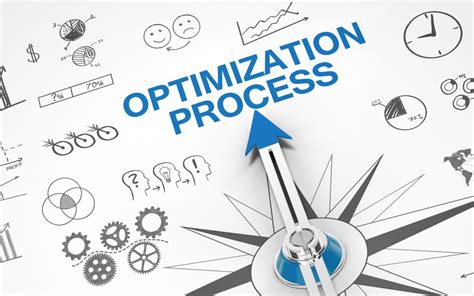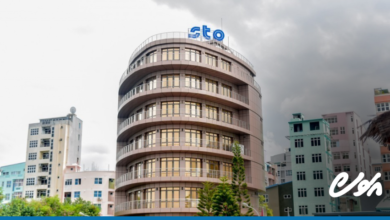Best Practices for Business Process Optimization

Maximize productivity and efficiency with our process analysis, identification of inefficiencies, workflow streamlining, automation implementation, and continuous monitoring for improvement.In today’s fast-paced business world, optimizing processes is essential for staying competitive and efficient. By identifying inefficiencies and streamlining workflows, businesses can save time and resources, leading to increased productivity and profitability. In this blog post, we will explore the best practices for business process optimization, including process analysis, identification of inefficiencies, streamlining workflow, implementation of automation, and continuous monitoring and improvement. By following these best practices, businesses can ensure that their processes are efficient, effective, and adaptable to the ever-changing demands of the market. Whether you are a small start-up or a large corporation, implementing these strategies can help you stay ahead of the curve and achieve your business goals. So let’s dive in and explore how to take your business processes to the next level.
Process Analysis
Best Practices for Business Process Optimization
When it comes to business process optimization, the first step is process analysis. This involves a detailed examination of the existing processes within the organization to identify any areas of inefficiency or waste. During this analysis, it’s crucial to map out the current workflow, document each step, and understand the inputs and outputs of each process.
Once the processes have been analyzed, the next step is to identify inefficiencies. This involves pinpointing any bottlenecks, redundancies, or unnecessary steps that may be hindering the efficiency of the workflow. By identifying these inefficiencies, organizations can better understand where improvements can be made and where resources are being wasted.
During the process analysis phase, it’s important to involve key stakeholders and employees who are directly involved in the processes being analyzed. Their insights and input are invaluable in understanding the day-to-day operations and in identifying potential areas for improvement. In addition, involving employees in the process analysis can help increase buy-in when implementing changes later on.
Identification of Inefficiencies
Best Practices for Business Process Optimization
Identifying inefficiencies within a business process is the crucial first step towards optimization. Inefficiencies can manifest in various forms, such as bottlenecks, redundant tasks, or unnecessary delays. Analyzing the workflow and mapping out the entire process can reveal areas where inefficiencies are present, allowing for targeted improvements to be made.
Once the inefficiencies have been identified, it is important to analyze the root causes behind them. This may involve conducting interviews with employees, reviewing historical data, or utilizing process mining tools to gain insights into the underlying issues. By understanding the factors contributing to inefficiencies, it becomes possible to develop effective solutions that address the core problems.
In addition to identifying existing inefficiencies, businesses should also establish mechanisms for continuously monitoring and identifying new inefficiencies as they arise. This may involve implementing key performance indicators (KPIs) to track process performance, employing automation tools to streamline repetitive tasks, or establishing regular audits to evaluate the efficiency of the workflow. By proactively identifying inefficiencies, businesses can ensure that their processes remain optimized and responsive to evolving operational needs.
Streamlining Workflow
Streamlining workflow is a crucial aspect of business process optimization, as it aims to improve efficiency and productivity. One of the best practices for streamlining workflow is to analyze the current process thoroughly, identifying bottlenecks and areas of inefficiency. This analysis involves closely examining each step of the workflow, from start to finish, and identifying any unnecessary steps or redundancies. By doing so, businesses can gain a clear understanding of where improvements can be made.
Once inefficiencies have been identified, the next step is to reorganize and simplify the workflow. This may involve eliminating unnecessary steps, automating certain tasks, or reordering the sequence of steps to create a more logical and streamlined process. By doing so, businesses can reduce the time and resources required to complete the workflow, ultimately leading to improved efficiency and cost savings.
After redesigning the workflow, it is important to continuously monitor and improve it to ensure that it remains optimized. This involves tracking key performance indicators (KPIs) related to the workflow, such as completion times and error rates, and using this data to make further improvements. By continuously monitoring and improving the workflow, businesses can ensure that it remains efficient and aligned with their goals and objectives.
Implementation of Automation
Implementation of automation in a business process is a crucial step towards efficiency and productivity. By automating repetitive tasks and processes, businesses can save time and resources, allowing employees to focus on more strategic and value-adding activities. Automation can take many forms, from simple email automation to complex workflow automation using advanced software and technology.
One of the key benefits of implementing automation in business processes is the reduction of human error. Automated processes follow set rules and guidelines, minimizing the risk of mistakes and inconsistencies. This not only improves the quality of work but also enhances customer satisfaction, as errors and delays are significantly reduced.
Furthermore, automation can lead to cost savings in the long run. While there may be initial investment in implementing automation technology and training employees, the long-term benefits far outweigh the costs. By streamlining and automating processes, businesses can operate more efficiently, reducing operational expenses and increasing overall profitability.
Continuous Monitoring and Improvement
Continuous monitoring and improvement are essential aspects of optimizing business processes. A company that wants to stay competitive in the market must constantly evaluate and refine its operations to ensure efficiency and effectiveness. By continuously monitoring the performance of various processes, a business can identify areas that need improvement and implement changes accordingly.
Furthermore, continuous improvement involves regularly evaluating the results of previous optimizations and making further adjustments as needed. This iterative approach to refining business processes ensures that the company is always striving to achieve the highest level of efficiency and productivity. It also allows the organization to adapt to changing market conditions and customer needs.
In addition, continuous monitoring and improvement require the use of data-driven insights to guide decision-making. By collecting and analyzing relevant data, a company can gain valuable insights into the performance of its processes and identify opportunities for enhancement. This data-driven approach enables the organization to make informed decisions about where to focus its improvement efforts, ensuring that resources are allocated strategically.





